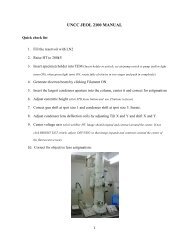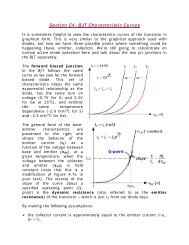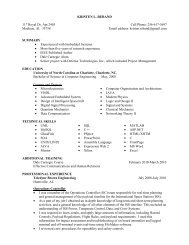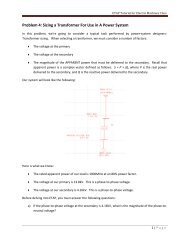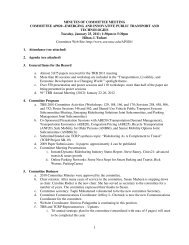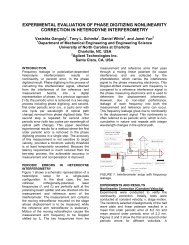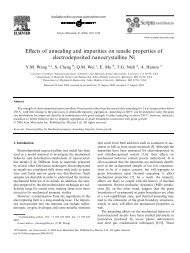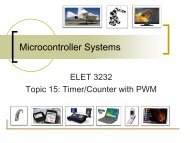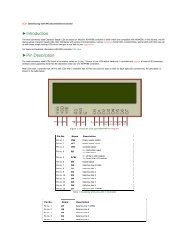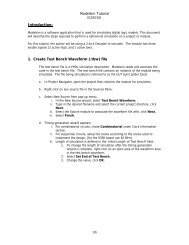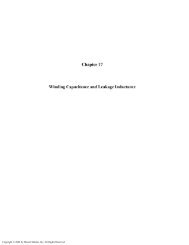ELET 3132L - Lab #1
ELET 3132L - Lab #1
ELET 3132L - Lab #1
You also want an ePaper? Increase the reach of your titles
YUMPU automatically turns print PDFs into web optimized ePapers that Google loves.
PROCEDURE:<br />
Steps 1 through 3: typical TTL (Transistor-Transistor Logic) Gate<br />
Figure 38: TTL Logic Gate<br />
Step 1. Construct the circuit shown in Figure 38 above with the +5V supply off and the function<br />
generator off. Turn the function generator amplitude all the way down.<br />
Step 2. Turn on the +5V supply. Turn on the function generator and set it for a sine wave, 1kHz,<br />
5VP-P with a 2.5VDC offset (0 to 5V signal). Use the oscilloscope to determine at what<br />
input voltage the Q1 turns on (VOUT = 0) and at what input voltage Q1 turns OFF<br />
(VOUT = 5V).<br />
Step 3. Fill out Table 1 as required.<br />
NM V V<br />
Table 1: Noise Margins<br />
= − LO<br />
Lo HI OUTHI INHI<br />
LO IN OUT<br />
NM = V − V<br />
What logic function does this TTL gate implement?__________________________<br />
<strong>ELET</strong> <strong>3132L</strong> Experiment <strong>#1</strong> 22 of 25




